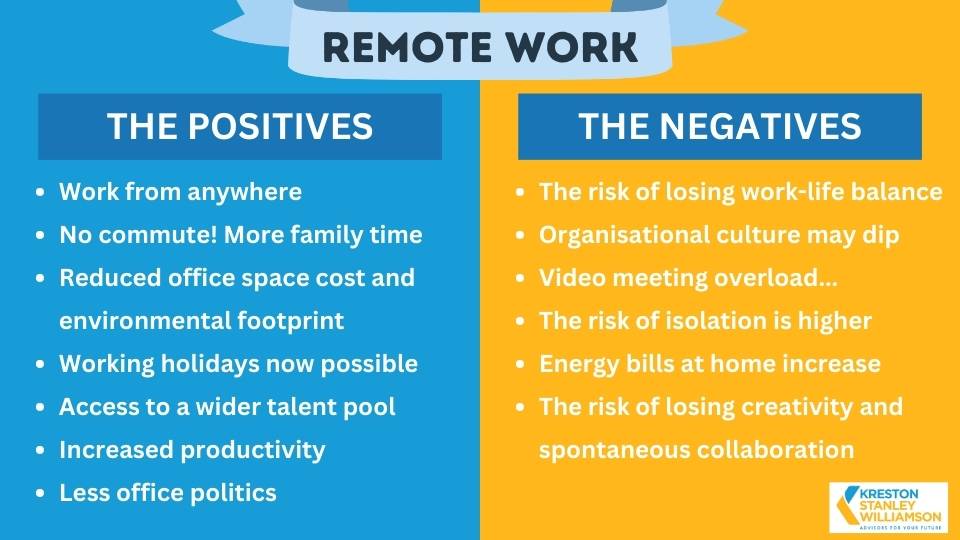

It seems the winds might be turning for the on-again, off-again relationship between corporate Australia and remote work. Following in the footsteps of the affable but egregiously wealthy Elon Musk and his decree that remote work is ‘morally wrong’, the Commonwealth Bank has announced a work-from-home policy change that could be a harbinger for more Australian companies to follow suit in embracing remote work in Australia.
As noted in The Australian Financial Review:
“We have now set the expectation with our office-based people that from mid-July, they will be required to come into the office for at least 50 per cent of their work time per month,” CBA group executive of human resources, Sian Lewis said.
The article also states that ‘the ability to work from home is considered a “must have” by 29 per cent of Australian working women, 25 per cent of men, 32 per cent of Gen Y Millennials and 27 per cent of Gen X (aged 42-57)’, indicating this change might not be popular with at least a third of the workforce.
Since the pandemic began, remote work has been a hot topic for businesses and for many, a confounding one. On the face of it, there are many obvious advantages. Eliminating the dreaded commute for workers. Less distractions. Reduced office space cost. However, the discourse around remote work is often filled with doubts and negative preconceptions.
Remote working has been on the rise since the pandemic began, and across the world until recently, there seemed to be no end in sight. By the end of 2021, in the US, 25% of the workforce was expected to be working remotely [1].
So what are the true benefits of working remotely? We have outlined the positives and negatives for you in this handy infographic, and expanded on some of the points below.


1. Enhanced Productivity
Remote work has often been linked with increased productivity. A two-year study by Stanford University in 2015 showed that remote workers were, on average, 13% more productive [2]. Recent data indicates that this trend is still valid. A PwC survey conducted in 2023 showed that 52% of employers reported improved employee productivity during remote work [3]. The factors contributing to this boost include fewer office distractions, more personal control over the work environment, and time saved on commuting.
2. Improved Work-Life Balance
Maintaining a healthy work-life balance is crucial for employee satisfaction and wellbeing. A study by Owl Labs in 2021 showed that people who worked remotely reported 22% higher happiness scores compared to their office-bound counterparts [4]. More recently, a 2023 Global Workforce Happiness Index showed that 78% of remote workers had a better work-life balance. The flexibility of remote work allows employees to tailor their work schedule around personal obligations and lifestyle choices, significantly improving their overall satisfaction and happiness levels.
3. Cost Savings
Remote work provides substantial cost savings for both employees and employers. Global Workplace Analytics estimates that an average person can save between $2,500 to $4,000 per year by working remotely because of reduced costs related to commuting, clothing, and food [5]. On the corporate side, companies can save on office rent, utility bills, office supplies, and other related expenses. In 2023, it was reported that businesses could save an average of $11,000 per year for every person who worked remotely half of the time [6].
4. Talent Acquisition and Retention
Remote work policies can significantly widen the pool of potential talent for businesses. The ability to work from any location makes a job more attractive to prospective employees, leading to an increase in job applications. LinkedIn’s Future of Work Report 2023 showed that job postings with a remote work option had 20% more applicants [7]. Additionally, businesses with remote work policies have a lower turnover rate, with a 2023 Buffer report finding a 25% lower employee turnover rate among remote companies compared to traditional ones [8].
5. Environmental Impact
Working from home reduces greenhouse gas emissions by eliminating the daily commute for millions of workers. A study by Global Workplace Analytics and FlexJobs suggested that remote work could reduce over 51 million metric tons of greenhouse gas emissions annually—equivalent to taking 11 million cars off the road [9]. This could play a significant role in meeting global environmental goals and reducing the impacts of climate change.
So Is This The End of Remote Work? or Not?
Remote work offers several notable advantages, including enhanced productivity, improved work-life balance, cost savings, better talent acquisition and retention, and a reduced environmental impact.
One quick look tells you this is a formidable list of advantages.
The challenge will then be how to harness and access these benefits, while still ensuring there is continued collaboration and work culture while working remotely. If this can be done, you will have the best of both worlds, and all parties involved will be able to reap the benefits.
This will ensure you are able to help future-proof your operations and ensure employee satisfaction.
References: [1] “Work-At-Home After Covid-19—Our Forecast”. Global Workplace Analytics. 2021. [2] “Does Working from Home Work? Evidence from a Chinese Experiment”. Stanford University. 2015. [3] “PwC’s US Remote Work Survey”. PwC. 2023. [4] “The State of Remote Work
Author – Pamela Perry
*Correct as of 26 May 2023
*Disclaimer – this article has been produced by Kreston Stanley Williamson as a service to its clients and associates. The information contained in the article is of general comment only and is not intended to be advice on any particular matter. Before acting on any areas contained in this article, it is imperative you seek specific advice relating to your particular circumstances. Liability limited by a scheme approved under professional standards legislation.













